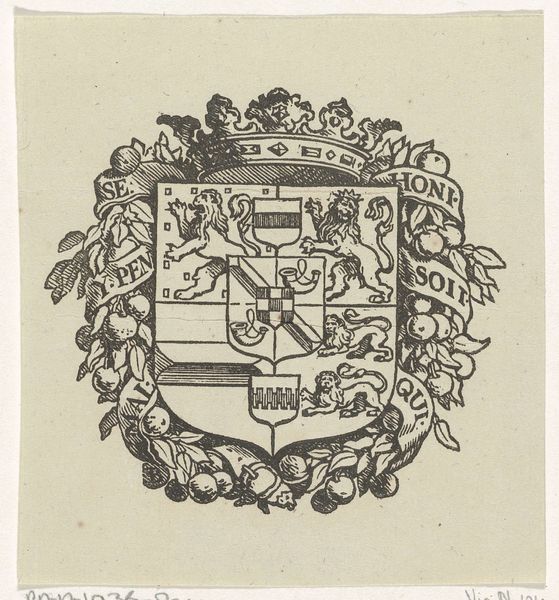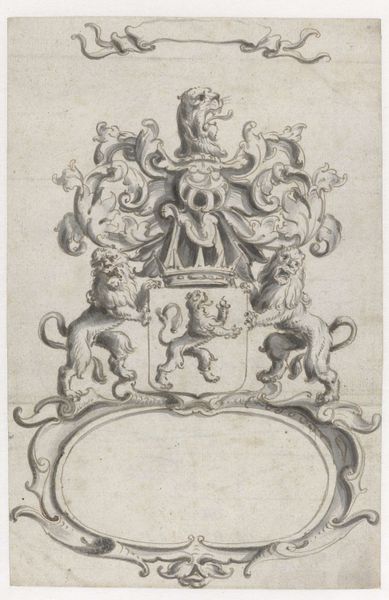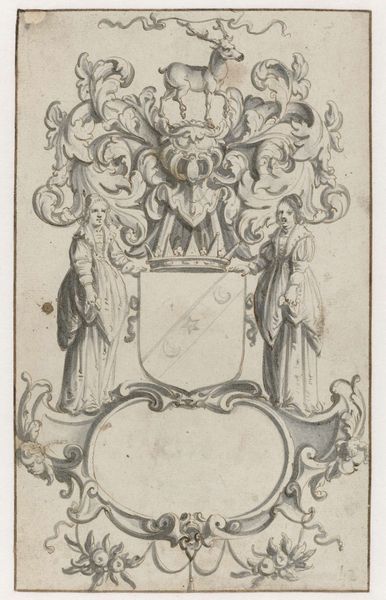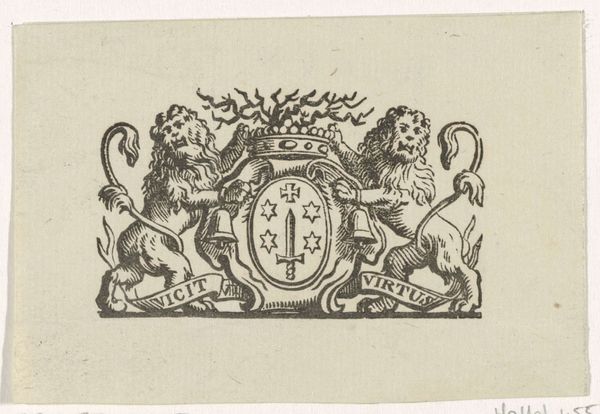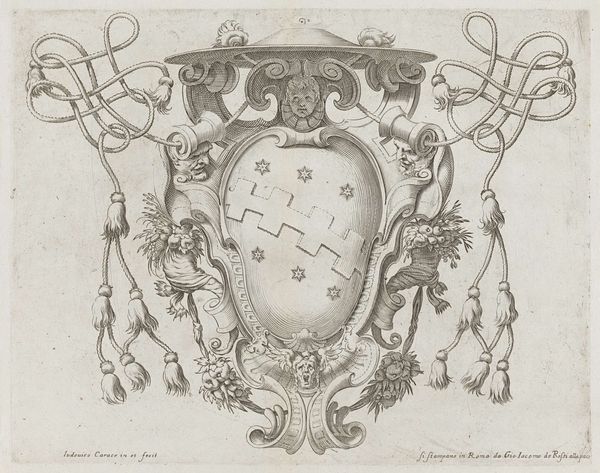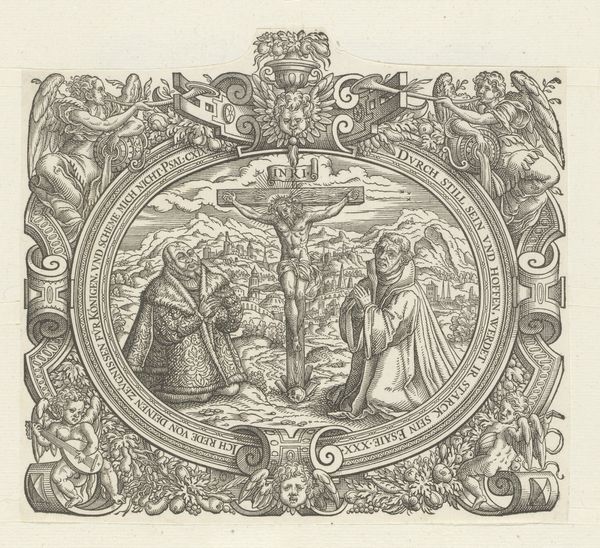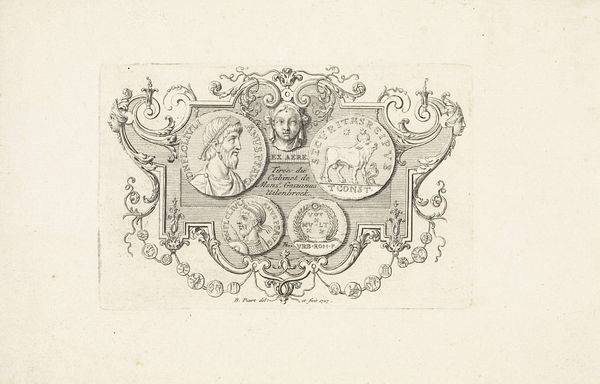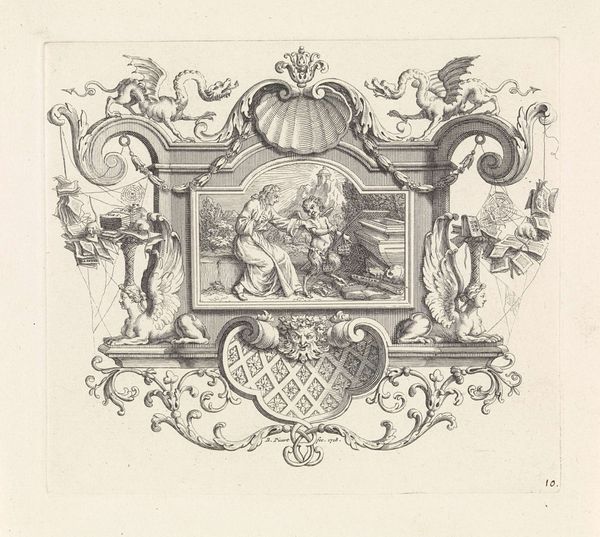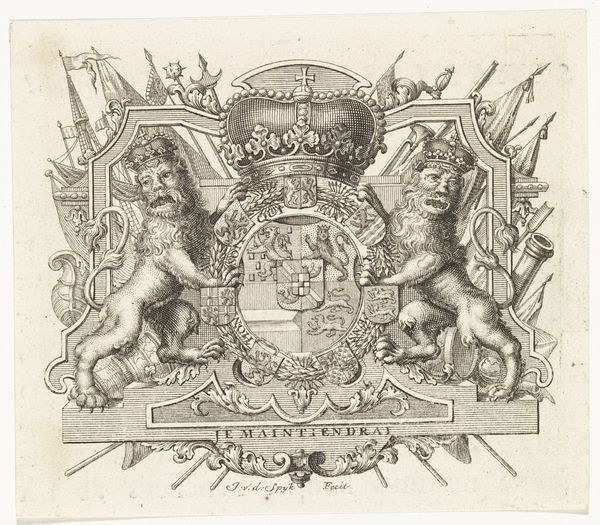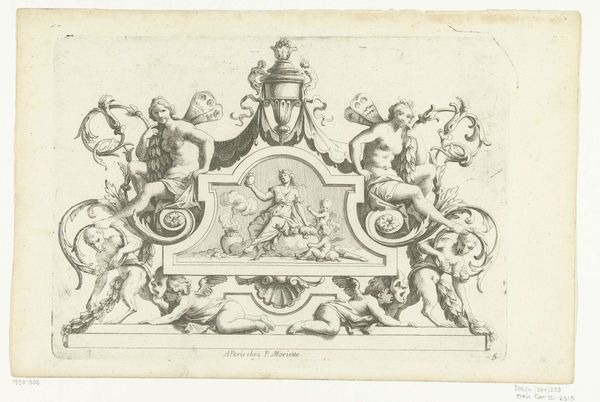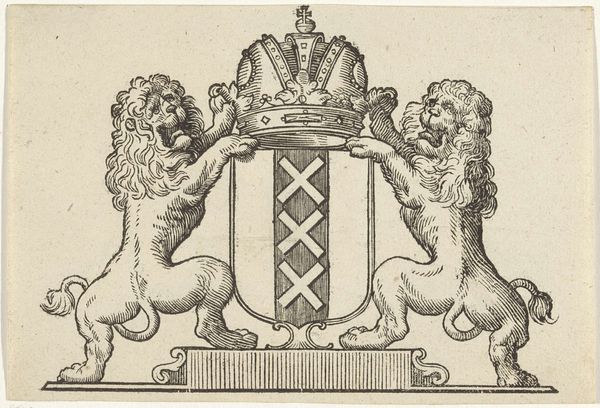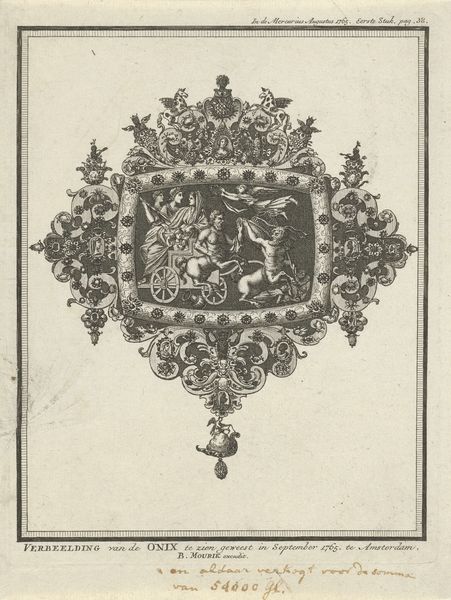
drawing, paper, ink
#
portrait
#
drawing
#
allegory
#
baroque
#
pencil sketch
#
paper
#
ink
#
history-painting
Dimensions: height 104 mm, width 179 mm
Copyright: Rijks Museum: Open Domain
Curator: What strikes me most immediately about Pieter Jansz's "Cartouche met het wapen van James Balfour of Denmiln," rendered between 1649 and 1654 in ink and pencil on paper, is its muted tonality. The monochrome palette lends the baroque ornamentation a sense of gravitas. Editor: It feels intentionally aged, almost as if time itself is an additional layer in its symbolism. The somber tones enhance the gravity of the crest; what exactly can you tell us about the Balfour coat of arms here? Curator: Indeed. The composition centers around the heraldic shield, supported by flanking figures amidst allegorical elements. There is a symmetry at play that attempts to equalize all representational elements. Editor: The lambs, the putti, and the reclining woman holding wheat—it is a celebration of prosperity and peace! Are we to read James Balfour as a bringer of plenty? Curator: Precisely! These figures aren’t merely decorative; they are symbolic carriers of meaning, classical allusions that elevate Balfour to something beyond the purely personal, a sort of benevolent patriarch perhaps? Semiotically speaking, each component signifies a dimension of his authority and, crucially, his desired legacy. The materiality here, with the delicate use of ink and pencil, seems understated considering the message of influence it seeks to deliver. Editor: The fact that it is a drawing gives it an intimate quality, as though we are being let in on something personal. The artist’s line emphasizes certain elements like the Balfour crest with layered baroque ornament. What I find curious is the blank cartouche that floats front and center; the visual language begs us to imagine it inscribed with declarations of valor. What should we make of this narrative absence? Curator: Its openness becomes an invitation, inviting viewers across the ages to collaborate, projecting our narratives onto the blank slate of history. Perhaps it is unfinished or perhaps, by design, eternally open to interpretation and continuous construction. Editor: A subtle provocation! And through that lens, the work shifts, transforming from a declaration into a question. Thank you for illuminating this multi-layered history lesson and the technical considerations present here. Curator: It's a pleasure. This has allowed me to consider the deliberate structure that defines our perceptions of legacy, and this piece, quite elegantly, captures that in stark form.
Comments
No comments
Be the first to comment and join the conversation on the ultimate creative platform.
